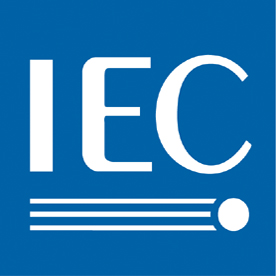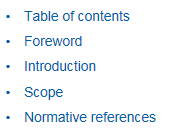IEC 62351-8:2020
Power systems management and associated information exchange - Data and communications security - Part 8: Role-based access control for power system management
Abstract
IEC 62351-8: 2020 is to facilitate role-based access control (RBAC) for power system management. RBAC assigns human users, automated systems, and software applications (collectively called "subjects" in this document) to specified "roles", and restricts their access to only those resources, which the security policies identify as necessary for their roles.
As electric power systems become more automated and cyber security concerns become more prominent, it is becoming increasingly critical to ensure that access to data (read, write, control, etc.) is restricted. As in many aspects of security, RBAC is not just a technology; it is a way of running a business. RBAC is not a new concept; in fact, it is used by many operating systems to control access to system resources. Specifically, RBAC provides an alternative to the all-or-nothing super-user model in which all subjects have access to all data, including control commands.
RBAC is a primary method to meet the security principle of least privilege, which states that no subject should be authorized more permissions than necessary for performing that subject’s task. With RBAC, authorization is separated from authentication. RBAC enables an organization to subdivide super-user capabilities and package them into special user accounts termed roles for assignment to specific individuals according to their associated duties. This subdivision enables security policies to determine who or what systems are permitted access to which data in other systems. RBAC provides thus a means of reallocating system controls as defined by the organization policy. In particular, RBAC can protect sensitive system operations from inadvertent (or deliberate) actions by unauthorized users. Clearly RBAC is not confined to human users though; it applies equally well to automated systems and software applications, i.e., software parts operating independent of user interactions.
The following interactions are in scope:
– local (direct wired) access to the object by a human user; by a local and automated computer agent, or built-in HMI or panel;
– remote (via dial-up or wireless media) access to the object by a human user;
– remote (via dial-up or wireless media) access to the object by a remote automated computer agent, e.g. another object at another substation, a distributed energy resource at an end-user’s facility, or a control centre application.
While this document defines a set of mandatory roles to be supported, the exchange format for defined specific or custom roles is also in scope of this document.
Out of scope for this document are all topics which are not directly related to the definition of roles and access tokens for local and remote access, especially administrative or organizational tasks.
As electric power systems become more automated and cyber security concerns become more prominent, it is becoming increasingly critical to ensure that access to data (read, write, control, etc.) is restricted. As in many aspects of security, RBAC is not just a technology; it is a way of running a business. RBAC is not a new concept; in fact, it is used by many operating systems to control access to system resources. Specifically, RBAC provides an alternative to the all-or-nothing super-user model in which all subjects have access to all data, including control commands.
RBAC is a primary method to meet the security principle of least privilege, which states that no subject should be authorized more permissions than necessary for performing that subject’s task. With RBAC, authorization is separated from authentication. RBAC enables an organization to subdivide super-user capabilities and package them into special user accounts termed roles for assignment to specific individuals according to their associated duties. This subdivision enables security policies to determine who or what systems are permitted access to which data in other systems. RBAC provides thus a means of reallocating system controls as defined by the organization policy. In particular, RBAC can protect sensitive system operations from inadvertent (or deliberate) actions by unauthorized users. Clearly RBAC is not confined to human users though; it applies equally well to automated systems and software applications, i.e., software parts operating independent of user interactions.
The following interactions are in scope:
– local (direct wired) access to the object by a human user; by a local and automated computer agent, or built-in HMI or panel;
– remote (via dial-up or wireless media) access to the object by a human user;
– remote (via dial-up or wireless media) access to the object by a remote automated computer agent, e.g. another object at another substation, a distributed energy resource at an end-user’s facility, or a control centre application.
While this document defines a set of mandatory roles to be supported, the exchange format for defined specific or custom roles is also in scope of this document.
Out of scope for this document are all topics which are not directly related to the definition of roles and access tokens for local and remote access, especially administrative or organizational tasks.
Additional information
| Publication type | International Standard |
|---|---|
| Publication date | 2020-04-28 |
| Edition | 1.0 |
| Available language(s) | English/French |
| TC/SC | TC 57 - Power systems management and associated information exchangerss |
| ICS | 33.200 - Telecontrol. Telemetering |
| Stability date | 2024 |
| Pages | 151 |
| File size | 2914 KB |
The following test report forms are related:
Share your publications
Learn how to share your publications with your colleagues, using networking options.
Payment information
Our prices are in Swiss francs (CHF). We accept all major credit cards (American Express, Mastercard and Visa, JCB and CUP), PayPal and bank transfers as form of payment.
Keep in touch
Keep up to date with new publication releases and announcements with our free IEC Just Published email newsletter.
Contact customer services
Please send your enquiry by email or call us on +41 22 919 02 11 between 09:00 – 16:00 CET Monday to Friday.

